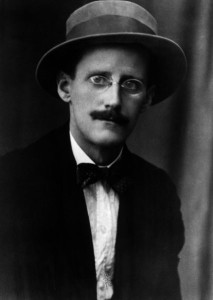In the miscellany Medley from October 1936 appears this intriguing pronouncement:
‘ It has been found that literary masterpieces of the first rank have been produced most frequently by authors who were from the ages of 40 to 44 inclusive’
Dr Harvey Lehman
We thought we’d test out the good doctor’s theory using, among other sources, the excellent Annals of Literature (1961), which finishes at 1950.
We started with Charles Dickens (1812 – 70). In this five year period he published three memorable novels: Bleak House, Hard Times, and Little Dorrit. However, most critics regard Great Expectations (1860) as his ‘literary masterpiece. ‘
We then turned to George Eliot (1819 – 80). She was 40 when Adam Bede was published, 41 when The Mill on the Floss appeared, 42 when Silas Marner came out, and 43 when Romola hit the shelves. All wonderful novels, but most critics would class Middlemarch( 1871-72) as her ‘ masterpiece of the first rank’.
Next we looked at James Joyce( 1882 – 1941). Here we hit the mark. His Ulysses, undoubtably a ‘ masterpiece of the first rank ‘, appeared in 1922 ( though it was years in the making ). Joyce was 40 at the time.
A fellow Modernist was T.S.Eliot (1888 – 1965). Surely, most cannot deny that The Waste Land (1922) was his masterpiece. However, this appeared when the poet was 34. The years when, according to Mr Lehman, he should have produced his greatest work, were mostly devoted to prose essays.
Another key Modernist was D.H.Lawrence (1885 – 1930). By the time he had reached 40 all but one of his masterpieces had been published. Most would not regard Lady Chatterley’s Lover (1927) as one, even though it appeared when Lawrence was 42.
Wyndham Lewis (1882 – 1957). Undoubtedly a Modernist of titanic intellect, his greatest masterpiece was probably The Apes of God (1930), which appeared when Lewis was 46.
Geoffrey Grigson (1905 – 85). Another giant figure in twentieth century English letters, he did indeed finish writing his autobiographical masterpiece, The Crest on the Silver (1950) when he was 44.
All the other members of the ‘Auden Generation ‘published their best work well before the age of 40.
Evelyn Waugh (1903 – 66) is problematical. Many would regard Decline and Fall (1928) as his masterpiece of the first rank ‘. Others would plump for Brideshead Revisited (1945), which came out when Waugh was 42.
Walt Whitman (1819 – 92). His Leaves of Grass, unquestionably a masterpiece of the first rank, appeared when the poet was just 36.
John Milton (1608 – 74). We might never have got Paradise Lost, surely the greatest long poem in the English Language, if the arch-parliamentarian Milton hadn’t got connections amidst the literati of the Restoration. He was close to top of the list for execution on the accession of Charles II, but luckily survived. Milton saw his poem published when he was 59.
Samuel Johnson (1709 – 84). His pioneering Dictionary was published in 1755, when the writer was 46, but as he took at least six years to write it, I think it can qualify.
William Wordsworth (1770 – 1850) brought out The Excursion when he was 44, but even the most fervent Wordsworthian would be hard put to claim it as ‘ of the first rank ‘.The same could not be said of The Prelude, which appeared in 1850.
Alfred Tennyson (1809 – 92 ). Many critics regard his In Memoriam (1850) as a masterpiece. He was 41 when it came out.
Geoffrey Hill (1932 -2016 ). Unfortunately, for the theory, our greatest living poet until his recent death, was 39 when he brought out Mercian Hymns (1971), which is quite simply the finest collection to appear within the past fifty years.
J.D.Salinger (1919 – 2010). Surely one of the least prolific writers of fiction in the world, his undoubted masterpiece, The Catcher in the Rye (1951), was published when Salinger was 42.
So, there it is. Admittedly this is only a selection of writers, but only six out of 15 at the best seem to have penned masterpieces between the age of 40 and 44 inclusive.
Perhaps Jot-watchers out there can add to the list. [R.M.Healey]


Six out of the fifteen looks a lot more impressive when you consider that – assuming an active life of sixty years and a writing life of – say – forty two years, beginning at eighteen, you’d expect only about two to three to produce masterpieces in any period of six years.
In addition, poets begin – and often finish, even if they don’t stop writing – younger than novelists: Keats, Owen, Douglas, war-poets especially, all died at an age when most novelists have hardly got going.
I must say, I disagree with your categorisation of some “masterpieces”. The Apes of God is what we’d have if Heath Robinson set out to break dozens of butterflies on a wheel – most of the people satirised arehonoured by their presence. I’d go for The Revenge for Love or Self-Condemned if I had to name Lewis’s great work.
Thanks Roger– you may well be right about ‘The Apes of God’ – it is a very fancy looking big book in the limited edition first printing but might well be less than a masterpiece. Some like ‘Snooty Baronet’ but my favourite (actually the only one I have fully read) is ‘Tarr’ written when he was 35 and revised when he was 45, which just about fits in with the Healey /Lehman theory…